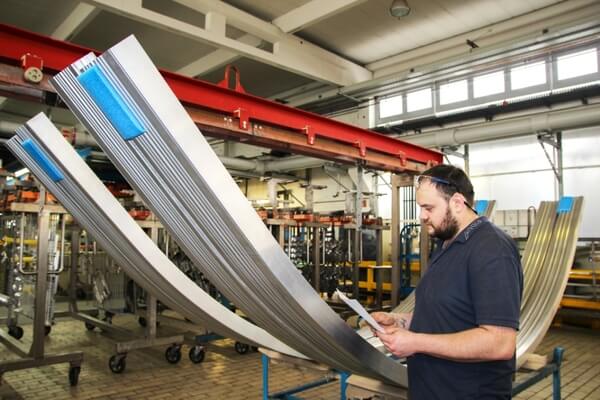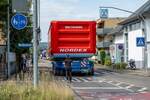News Release from Aalberts Surface Treatment GmbH
Wind Industry Profile of
When customers have big plans, the specialists in Kerpen are in demand
AHC was founded by Ulrich Reininghaus and Herbert Friebe in Cologne-Mülheim in 1960. It took months before the first orders came in, but then business increased sharply. A new, generously proportioned production site was needed, and it was found in Kerpen, in the Rhineland, Germany. Since then, the Kerpen plant has been regarded as the main AHC plant and has been joined by the administration, IT, research and development and facility planning departments.
Today the Kerpen plant has 115 employees and coats technical components for around 2,700 active clients, primarily from the mechanical engineering and automotive sectors. Hard anodising (HART-COAT®) and electroless nickel (DURNI-COAT®) are the standard processes. The SILA-COAT® 5000 process, an anodic dip coating to increase alkaline resistance, and the HC large part unit (HC-GTA) are special features of the Kerpen plant. The plant operates a five-day week in a 3-shift operation with Saturday as a back-up day. Three apprentices are accepted each year, two as surface coaters and the other, for example, in the workshop or shipping department.
Previously, the components to be coated came more from mechanical engineering; now the tendency is more towards the automotive industry. Nevertheless, 60% of the turnover still comes from mechanical engineering and 40% from the automotive sector.
In the HART-COAT® range (HC range), all types of housings are coated: for example, valve housings, filter housings or fan housings for washing machines. In addition, there are components such as gears and engine pistons, cooling units for exhaust gas recirculation, clutch parts, guide rails for product distribution systems or rollers for the paper and film industry.
In the DURNI-COAT® range (DNC range), there are components such as clutch hubs, needles for carburettors, secondary rotors for compressors, pump parts for automotive air-conditioning systems, technical springs or test rims. “We have a relatively large workshop that keeps the equipment in good shape and also makes the majority of the racks required for the coating,” says Plant Manager Ralf Nott. “This gives us the necessary availability, flexibility and speed. Special racks are also made, for example, to cool castings that could overheat during the coating process. Thanks to our workshop skills, we can react more quickly to customer requirements.”
The HC-GTA was newly built almost 10 years ago. Here, large parts such as rollers, pipes, profiles or the aforementioned guide rails for product distribution systems are hard coated. “The handling, masking and clamping of large components is very demanding”, explains Sales Manager Olaf Igelbrinck. “In addition, there are hardly any competitors who are capable of hard anodising parts up to 8m in length.” A large warehouse allows for the storage of large parts as well as parts for call orders, e.g. for automotive suppliers.
QA Manager Helmut Lohmar explains that 35,000 orders are processed annually. He is proud of the fact that the complaint rate is less than 0.5%. “Awareness of good work quality exists throughout the entire team. The effort spent on documentation for coating processes has steadily increased in recent years, not least due to more orders from the automotive industry. You have to be able to rely on your team. Handling complaints requires even more work than taking care of the original orders.” summarises Helmut Lohmar.

Reviewing the work order for the hard coating of aluminium profiles (Photo: AHC)
- Source:
- AHC
- Author:
- Jürgen Diesing
- Email:
- juergen.diesing@ahc-surface.com
- Link:
- www.ahc-surface.com/...
- Keywords:
- AHC, Kerpen, Coatings, Germany



























